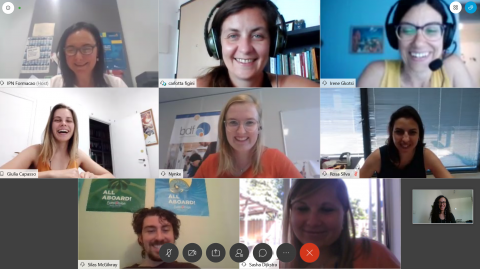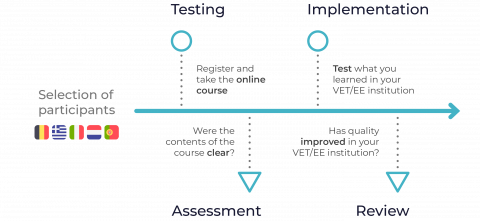2.3 - Identify market trends
Abstract
As Quality Manager, you should identify local, regional, national and international market trends and industrial changes. Indeed, while planning a high-quality course in entrepreneurial education, you
may need to adapt it to the industrial transformation trends. For instance, you may need to design a training course in EE taking into consideration the technological megatrends (ex. data driven world,
cybersecurity and blockchain), social-political mega-trends (ex. globalization) and environmental and
smart economy megatrends (ex. green and circular economy).
Why is this important for you as a QM?
- To foster entrepreneurship in emerging industries with growth potential;
- To develop a world class cluster with competitive added value;
- To provide tailor-made entrepreneurial courses on a specific and growing sector (ex. digital one) to support the local growth and competitiveness of your community;
- To make your start-ups grow more rapidly;
- To develop long term business planning;
- To make self-employment more attractive and an opportunity for unemployed persons;
- To make your local economy more competitive;
How should I implement the action?
In order to identify the trends of the different sectors you need to acknowledge that industry. In
order to do so you can:
- Keep track of the industry influencers and publications. Do you know who the most important people in the sector you are targeting are? How to communicate with the audience? Do you know any entrepreneurs in the field?
- Keep you up to date with the latest industry research and trends report. You can actually find interesting information at the European Observatory for Clusters and Industrial Change and in the reports of the Joint Research Centre of the European Commission and/or Research Gate.
- Make the most of the information you get from the financial markets and newspapers to assess the industry behaviour;
- Listen to your customers and stakeholders. Make quantitative surveys or interviews for your stakeholders; in which sector do they want to invest?
- What are your competitors doing? Which kind of industrial market are they targeting while they are delivering their courses? Is one of your competitors reacting to an emerging trend?
How should I know if I have made an impact thus increasing the quality of the VET provision and to which extent?
- Increased numbers of participants on your training courses (at least 20%), see EQAVET n.3;
- Increased numbers of start-ups that are linked to emerging industries (ex. creative industries, digital worlds);
- More sustainable business plans and an increase in the employability rates, see EQAVET n.5,6,7,9.
Links & further readings
- European observatory for clusters and industrial change. 2020. [https://www.clustercollaboration.eu/eu-initiatives/european-cluster-observatory]. Last access 19.06.2020.
- Joint research centres. 2020. [https://ec.europa.eu/info/departments/joint-research-centre_en]. Last access 19.06.2020.
- Research gate. 2020. [https://www.researchgate.net/]. Last access 19.06.2020.
- Eurostat.2020 [https://ec.europa.eu/eurostat/home?]. Last access 19.06.2020.



